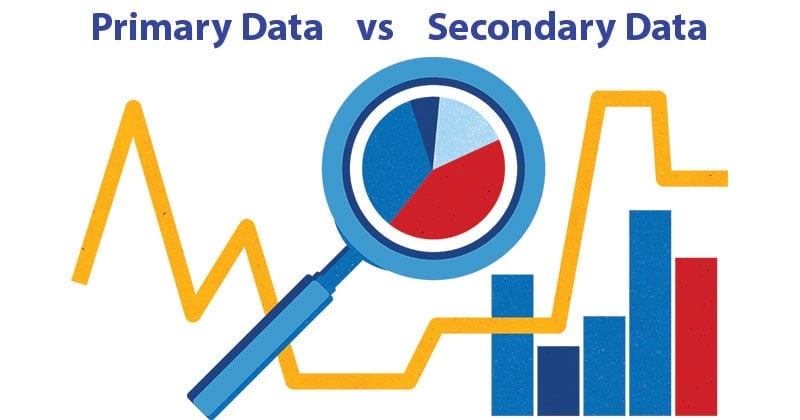- There are two major approaches to gathering information about a situation, person, problem or phenomenon.
- When you undertake a research study, in most situations, you need to collect the required information; however, sometimes the information required is already available and need only be extracted.
- Based on these broad approaches to information gathering, data can be categorized as:
- Primary data
- Secondary data.
- As the name suggests, primary data is one which is collected for the first time by the researcher while secondary data is the data already collected or produced by others.

Interesting Science Videos
Primary Data
- It is the data collected by the investigator himself/ herself for a specific purpose.
- Data gathered by finding out first-hand the attitudes of a community towards health services, ascertaining the health needs of a community, evaluating a social program, determining the job satisfaction of the employees of an organization, and ascertaining the quality of service provided by a worker are the examples of primary data.
Advantages of using Primary data
- The investigator collects data specific to the problem under study.
- There is no doubt about the quality of the data collected (for the investigator).
- If required, it may be possible to obtain additional data during the study period.
Disadvantages of using Primary data
- The investigator has to contend with all the hassles of data collection-
- deciding why, what, how, when to collect
- getting the data collected (personally or through others)
- getting funding and dealing with funding agencies
- ethical considerations (consent, permissions, etc.)
- Ensuring the data collected is of a high standard-
- all desired data is obtained accurately, and in the format, it is required in
- there is no fake/ cooked up data
- unnecessary/ useless data has not been included
- Cost of obtaining the data is often the major expense in studies
Secondary Data
- Data collected by someone else for some other purpose (but being utilized by the investigator for another purpose).
- Gathering information with the use of census data to obtain information on the age-sex structure of a population, the use of hospital records to find out the morbidity and mortality patterns of a community, the use of an organization’s records to ascertain its activities, and the collection of data from sources such as articles, journals, magazines, books and periodicals to obtain historical and other types of information, are examples of secondary data.
Advantages of using Secondary data
- The data is already there- no hassles of data collection
- It is less expensive
- The investigator is not personally responsible for the quality of data
Disadvantages of using Secondary data
- The investigator cannot decide what is collected (if specific data about something is required, for instance).
- One can only hope that the data is of good quality
- Obtaining additional data (or even clarification) about something is not possible (most often)
Primary Data vs Secondary Data
Primary data is an original and unique data, which is directly collected by the researcher from a source according to his requirements. As opposed to secondary data which is easily accessible but are not pure as they have undergone through many statistical treatments.
| Character | Primary Data | Secondary Data |
| Definition | Primary data refers to the first-hand data gathered by the researcher himself. | Secondary data means data collected by someone else earlier. |
| Data | Real time data | Past Data |
| Process | Very Involved | Quick and easy |
| Source | Surveys, observations, experiments, questionnaire, personal interview, etc. | Government publications, websites, books, journal articles, internal records etc. |
| Cost-effectiveness | Expensive | Economical |
| Collection time | Long | Short |
| Specificity | Always specific to the researcher’s needs. | May or may not be specific to the researcher’s need. |
| Form | Available in the crude form | Available in the refined form |
| Accuracy and Reliability | More | Less |
References
- Kumar, Ranjit. Research Methodology: A Step-by-Step Guide for Beginners. Los Angeles: SAGE, 2011. Print.
- https://communitymedicine4asses.wordpress.com/2015/10/29/review-primary-and-secondary-data/
- https://communitymedicine4asses.com/2013/01/07/types-of-data-primary-and-secondary-data/
- https://keydifferences.com/difference-between-primary-and-secondary-data.html
- https://blog.marketresearch.com/not-all-market-research-data-is-equal
